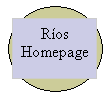|
 s we sit here together in this classroom, Where are we? How do we locate ourselves, actually and usefully? To begin with, how do we conceive of place? It is not simply a geography. "Place" of course means many things, and we are in many places, all at the same time. s we sit here together in this classroom, Where are we? How do we locate ourselves, actually and usefully? To begin with, how do we conceive of place? It is not simply a geography. "Place" of course means many things, and we are in many places, all at the same time.
On the one hand, we ARE in a geographic place, and perhaps this IS what we think of first when we say "place." Our geographic place is, at very least, the West, right outside those doors. One of my favorite things about the West is how we must look at it. Everyone talks about the light out here--and that's the key. To look at the West, when you first step out into it, you must first--because of the light--close your eyes. Normally when you close your eyes, it's to sleep or to dream. When you open your eyes again you don't simply look at the landscape at that moment--you also imagine it. The imagination is complicit in seeing this world. There may be a lesson in that.
On the other hand, today, we are also in a new technological place, where the dominant language in the world is not English or Chinese, but is actually binary language--computer language. There is now more communication between things than people. In fact, computers and machines have more conversations on any single working day than the sum total of mankind going back to the beginning of time.
In this way, the world seems to have picked up tremendous speed, with everything, all kinds of information, clicking and whirring and ringing around us, and places like Burger King advertising "fast foods for fast times." To get a sense of that speed, think of it this way. In 1970, a car cost about $8000. If that car were technology, and we were to look at it today in comparison to 1970, the leaps are astounding. That same car--if we use it to represent what has happened to technology--would cost $.80 (that's a good thing!), it would get close to 1000 miles per gallon of gas, and its speed would be Mach 6.
The imagination is also complicit in this view of place. We peek at it when we get onto the Internet, but it is only a very small peephole. This technological place stands in stark contrast to those who have no passport to it at all: the fact is, half the world's population today has yet to make its first phone call.
Well, the good thing is, we don't have to choose--nor, possibly, do we get to choose--between these places. They are simultaneous, and messy, and confusing. But they do help us to begin to see the dimensionality of place, and how many legs we need just to stand still. Place, finally, can be many things, but mostly it is a function of the heart. Place is geographic; place is technologic; place is where we are in time; place is privilege; place is language--but first it is where we place ourselves in relation to each other.
And then there is movement to consider: on this geography of ourselves, are we moving inexorably forward toward technology's best, sexy dream of tomorrow, or rather, are we quite possibly moving toward maybe not ever placing that first phone call at all? How do we move in place, and toward what best next point?
Guillaume Apollinaire said that--in their best moment--when humans wanted to reinvent the leg, they invented the wheel. In finding a new world of movement, we looked not to what we knew, but to what we wanted. I try to think this way as a writer and as a person. Our leaps toward solutions and understanding must be bold--whether we move forward or backward, or sideways or up and own--and we must recognize that they will be found in PLACES we do not expect.
A leg does not look like a wheel. Let us embrace the surprise and the difference.
|
|





